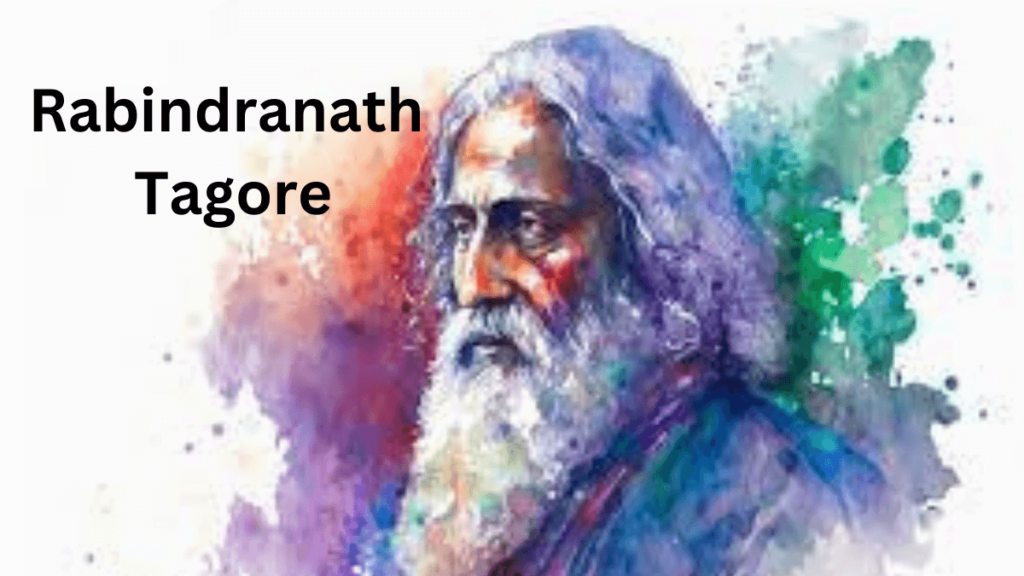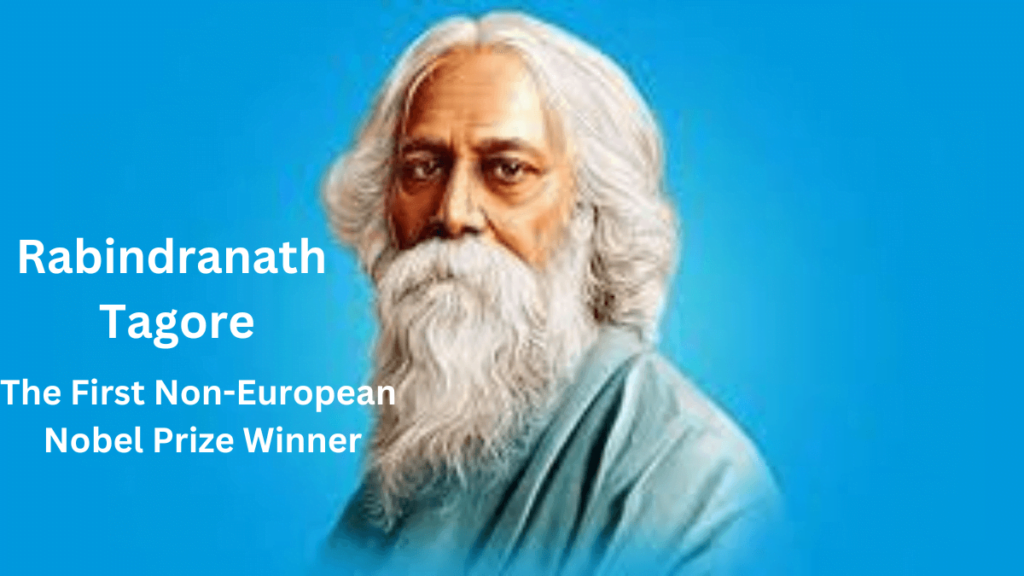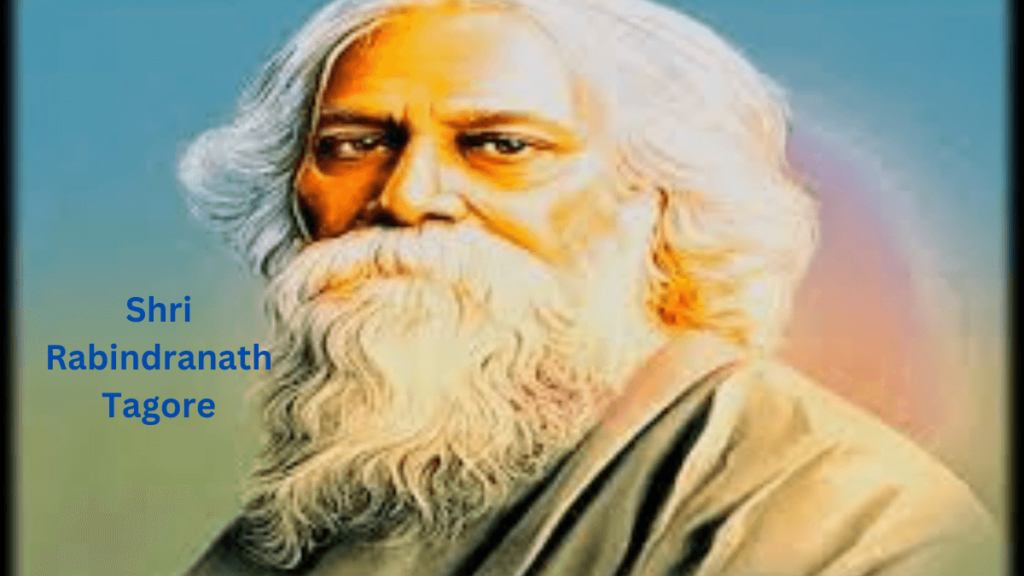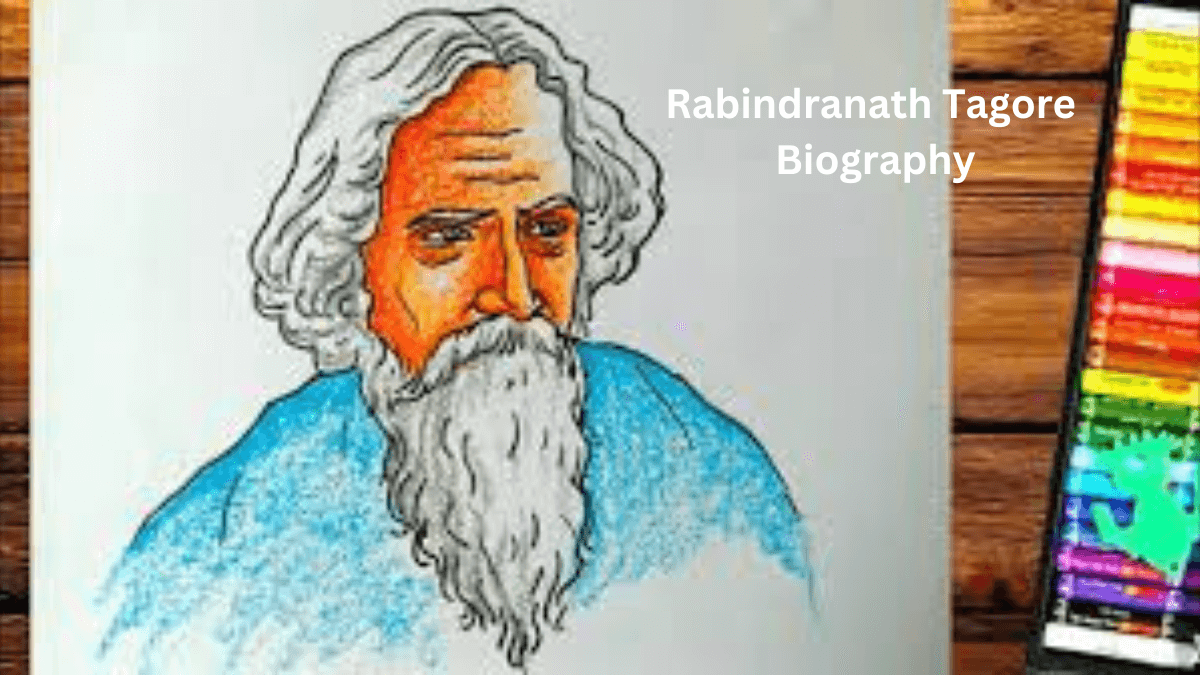A well-known figure in Indian history, Rabindranath Tagore is a name that conjures up images of literature, art, and cultural significance. The purpose of this post is to examine the life, works, and enduring influence of this extraordinary person who has left a lasting impression on the globe. From his early life to his literary and artistic accomplishments, Tagore’s journey is a testament to the power of creativity and the pursuit of knowledge.
Introduction
Rabindranath Tagore was an all-around genius who achieved greatness in a variety of professions. He was born on May 7, 1861, in Calcutta, India. In addition to being a great poet, writer, and playwright, he was also a philosopher, painter, and educator. The topics covered by Tagore’s contributions were diverse and included love, nature, patriotism, spirituality, and humanism. Readers from many walks of life continue to be moved and inspired by his writings, which transcend cultural barriers.
Rabindranath Tagore’s Early Life and Education
Tagore was born into a prominent Bengali family known for their literary and artistic inclinations. His father, Debendranath Tagore, was a respected philosopher and religious reformer, while his mother, Sarada Devi, was a deeply spiritual woman. As a result of his intellectually stimulating upbringing, Tagore became enamoured with literature and the arts at a young age.
Despite the wealth and influence of his family, Tagore’s upbringing was unconventional. He received basic formal education but was primarily educated at home by private tutors and through self-study. This unconventional method enabled him to research a wide range of topics and create his own distinct outlook on life.

Literary Career
At the age of 16, Tagore published his first collection of poems, which marked the beginning of his creative career. He developed his writing abilities throughout time and experimented with a variety of genres, including poems, short tales, novels, and dramas. His literary works often reflected his deep connection with nature, his musings on love and relationships, and his social and political commentary.
Major Works and Their Significance
Tagore’s literary repertoire is vast and encompasses numerous notable works. One of his most celebrated works is “Gitanjali” or “Song Offerings,” a collection of poems that earned him international recognition. It was through “Gitanjali” that Tagore became the first non-European to be awarded the Nobel Prize in Literature in 1913. The core of human emotions, spirituality, and the bond between man and the divine are all brilliantly captured in this collection.
Another significant work by Tagore is “Ghare-Baire” or “The Home and the World,” a novel that delves into the themes of love, nationalism, and personal identity. Through this masterpiece, Tagore explores the complexities of relationships and the conflicts that arise in the backdrop of India’s struggle for independence. Additionally, “Shesher Kobita” or “The Last Poem” stands as a testament to Tagore’s mastery of poetic expression. This novel-in-verse depicts a love story intertwined with philosophical musings on life, death, and the transient nature of existence.
Themes and Style in Tagore’s Writings
Tagore’s writings are characterized by their lyrical quality, evocative imagery, and profound symbolism. Themes of love, nature, spirituality, and the human condition are frequently explored in his works. Tagore’s deep connection to nature is evident in his vivid descriptions of landscapes, which serve as metaphors for the human experience.
Furthermore, his writings reflect his social and political consciousness. Tagore was deeply concerned with the issues of his time, such as nationalism, social inequality, and cultural identity. His works provide a keen insight into the social fabric of colonial India and resonate with readers even today.
Social and Political Activism
Along with being a prolific writer, Tagore was also a vocal advocate for various social and political causes. He promoted a number of causes, such as women’s rights, nationalistic ideas, and education, using his platform and influence.
Rabindranath Tagore’s Involvement in Social Causes
Tagore firmly believed in the power of education and its ability to bring about societal transformation. In 1901, he founded an experimental school called Shantiniketan in rural Bengal, which later evolved into Visva-Bharati University. This institution aimed to provide a holistic education that combined intellectual pursuits with artistic and cultural enrichment.
Political Beliefs and Nationalism
Tagore’s views on nationalism were nuanced and went beyond narrow definitions. While he supported the idea of an independent India, he also emphasized the importance of cultural exchange and understanding among nations. He believed that true nationalism should embrace diversity and promote unity in a global context.
Founding of Shantiniketan and Visva-Bharati
University Shantiniketan became a hub of intellectual and artistic activity under Tagore’s guidance. It attracted scholars, artists, and students from all over the world, fostering an environment of cross-cultural dialogue and collaboration. Visva-Bharati University continues to be a center for learning, where students engage with Tagore’s philosophy and ideals.

Artistic Pursuits
In addition to his literary pursuits, Tagore was also an accomplished musician and painter. His artistic endeavors added a multidimensional aspect to his creative expressions and contributed to the richness of Indian art and culture.
Tagore’s Contributions to Music and Painting
Tagore’s contributions to music and painting were significant and had a profound impact on the cultural landscape of India. In the realm of music, Tagore developed a unique style known as Rabindra Sangeet. This genre of music combined elements of Indian classical music with folk influences, creating a melodic and poetic form of expression. Tagore himself composed over 2,000 songs, which were deeply rooted in the themes of love, nature, devotion, and human emotions. His compositions continue to be cherished and performed by musicians and enthusiasts worldwide.
Tagore’s artistic talent extended to the visual arts as well. He was an accomplished painter and created numerous artworks throughout his life. His paintings often depicted scenes from nature, portraits, and abstract representations of emotions. Tagore’s artistic style was characterized by its simplicity, elegance, and the ability to capture the essence of the subject matter.
Development of Rabindra Sangeet
Rabindra Sangeet, as developed by Tagore, revolutionized the music scene in India. His songs not only showcased his poetic brilliance but also incorporated complex melodies and intricate rhythms. Tagore’s music transcended language barriers, and his compositions have been translated and performed in various languages across the globe. Rabindra Sangeet continues to be celebrated as a unique and treasured musical tradition.
Influence on Bengali Art and Culture
Tagore’s artistic pursuits had a profound influence on Bengali art and culture. His emphasis on the integration of arts, literature, and music inspired subsequent generations of artists and intellectuals. The impact of his work can be seen in the works of renowned Bengali writers, musicians, and painters who were influenced by his creative vision.
International Recognition and Legacy
Tagore’s literary and artistic achievements garnered international recognition and left an enduring legacy that continues to inspire generations.
Nobel Prize in Literature
In 1913, Tagore became the first non-European to be awarded the Nobel Prize in Literature for his collection of poems, “Gitanjali.” This prestigious accolade brought global attention to Tagore’s literary genius and his ability to captivate readers with his profound insights and lyrical expressions.
Impact on Literature and Cultural Exchange
Tagore’s works have been translated into numerous languages and have found a global audience. His writings, filled with universal themes and emotions, resonate with readers across cultures. Tagore’s literary contributions have fostered cultural exchange, deepened mutual understanding, and enriched the world of literature.
Tagore’s Lasting Influence on Indian Society
Tagore’s ideas and philosophy continue to shape Indian society. His emphasis on education, artistic pursuits, and cultural preservation laid the foundation for institutions like Visva-Bharati University and influenced educational reforms in India. Tagore’s humanistic approach, his advocacy for social causes, and his belief in the power of creativity have had a lasting impact on the collective consciousness of the Indian people.

Also Read Shaheed bhagat singh Biography In Hindi – Click Here To Read
Personal Life and Philosophy
Tagore’s personal life and philosophical beliefs played a significant role in shaping his creative output.
Relationships and Family
Rabindranath Tagore’s personal life was marked by deep relationships and familial bonds. He was married to Mrinalini Devi and had five children. The close-knit Tagore family provided him with support and inspiration throughout his journey.
Tagore’s Philosophical Beliefs
Tagore’s philosophical beliefs were deeply rooted in spirituality and humanism. He emphasized the interconnectedness of all beings and believed in the power of love, empathy, and compassion to overcome societal divisions. Tagore’s writings often reflected his contemplations on the nature of existence, the complexities of human emotions, and the search for meaning and purpose.
Reflection on Spirituality and Humanism
Tagore’s philosophical reflections encompassed spirituality and humanism. He explored the realms of spirituality, delving into the interconnectedness of the human spirit with the divine and the universe. His writings often expressed a sense of wonder and awe for the beauty and mysteries of existence. Tagore’s humanistic outlook emphasized the importance of recognizing the inherent worth and dignity of every individual. He believed in the power of education, art, and culture to uplift humanity and promote social harmony. Tagore’s philosophy emphasized the need for empathy, understanding, and the celebration of diversity.
Also Read Yogi Adityanath Biography, Family In Hindi – Click Here To Read
What is SEO? – Click Here To Know
Conclusion
Rabindranath Tagore, a multifaceted genius and a luminary in the world of literature and art, continues to inspire and captivate audiences worldwide. His literary works, musical compositions, and artistic pursuits have left an indelible mark on Indian culture and have garnered international acclaim. Tagore’s profound insights into the human condition, his exploration of spirituality and humanism, and his commitment to social causes have ensured his lasting legacy.
Tagore’s enduring influence is a testament to the power of creativity, imagination, and the pursuit of knowledge. His writings and artistic expressions continue to resonate with readers, evoking a range of emotions and provoking deep introspection. Rabindranath Tagore’s contributions are a testament to the transformative power of literature and art in shaping societies and touching the hearts and minds of people across the globe.
Visit Our Home Page To Know More – Click here To Visit
FAQs – Rabindranath Tagore Biography
Q – What is Rabindranath Tagore famous for?
Ans – Rabindranath Tagore is famous for his literary works, especially his collection of poems called “Gitanjali,” which earned him the Nobel Prize in Literature in 1913.
Q – How many Nobel Prizes did Rabindranath Tagore win?
Ans – Rabindranath Tagore won the Nobel Prize in Literature in 1913 for his collection of poems, “Gitanjali.”
Q – Which is Tagore’s most famous poem?
Ans – Tagore’s most famous poem is “Where the mind is without fear,” which is a part of his collection “Gitanjali.”
Q – Did Tagore write in languages other than Bengali?
Ans – Yes, Tagore was a prolific writer who wrote in Bengali and also translated his own works into English. He was proficient in both languages.
Q – How did Tagore contribute to education?
Ans – Tagore founded Shantiniketan, an experimental school that later became Visva-Bharati University. He emphasized holistic education, combining intellectual pursuits with artistic and cultural enrichment.

